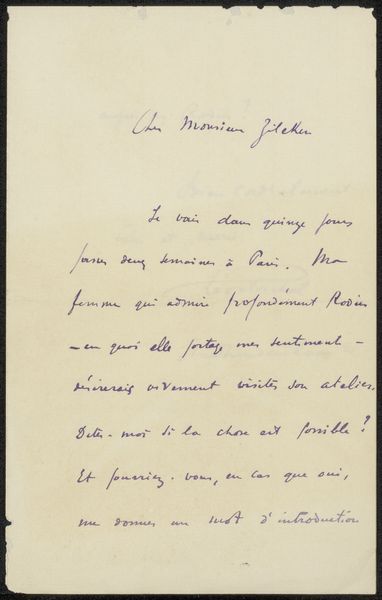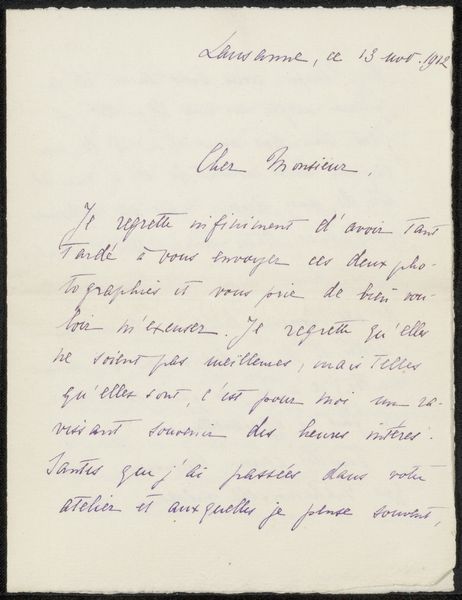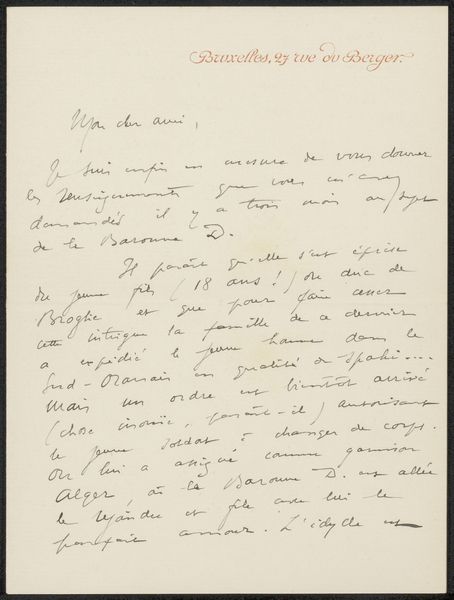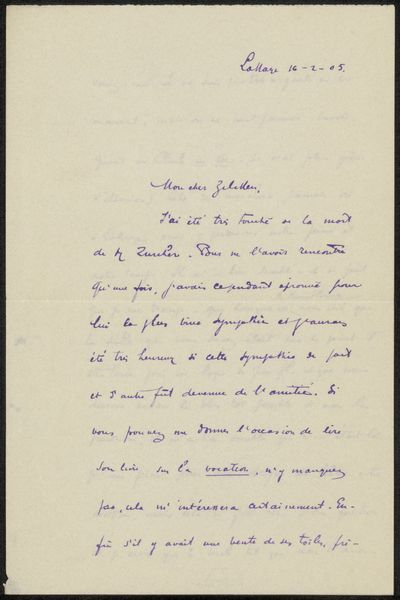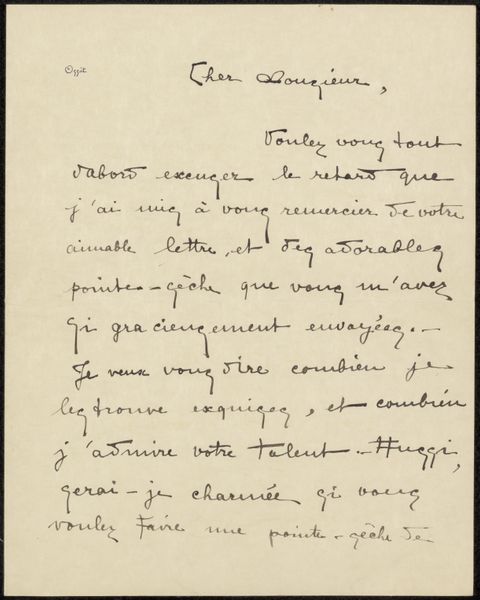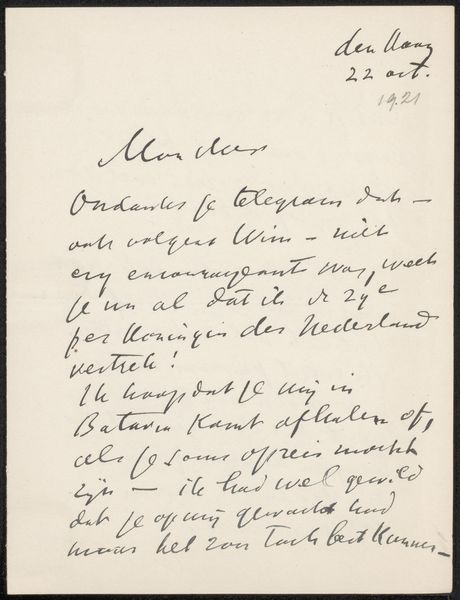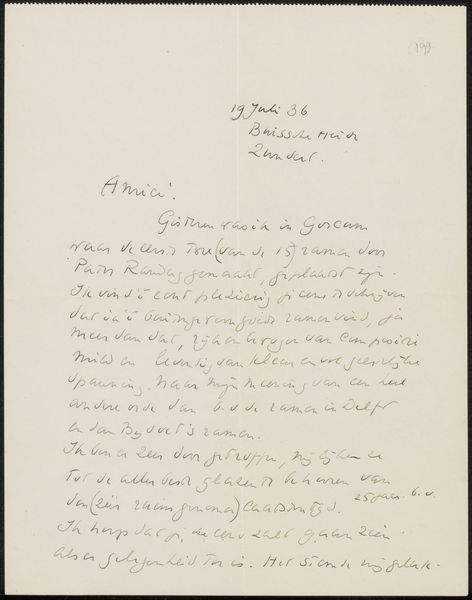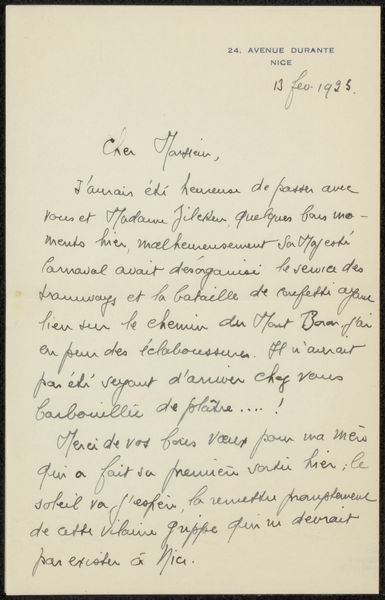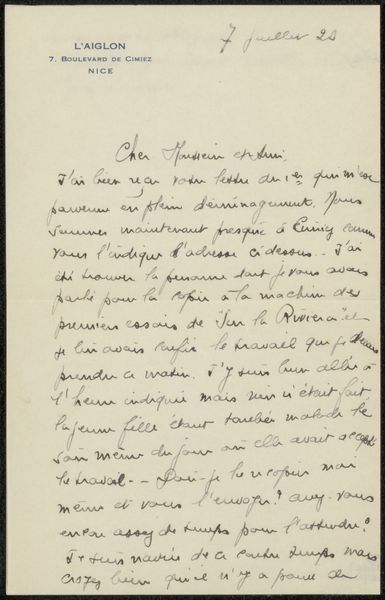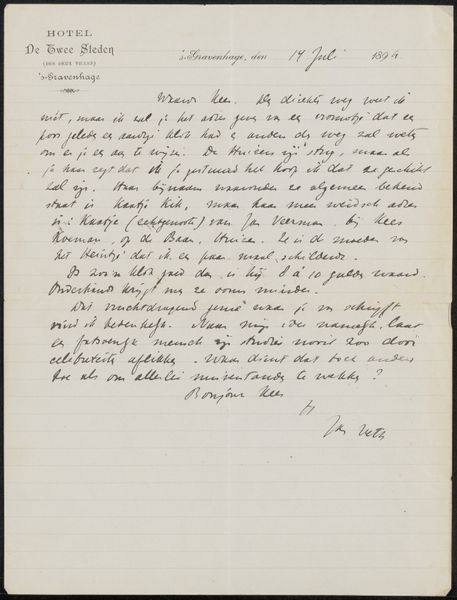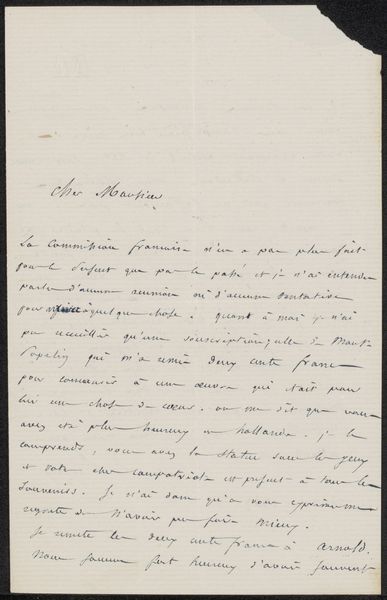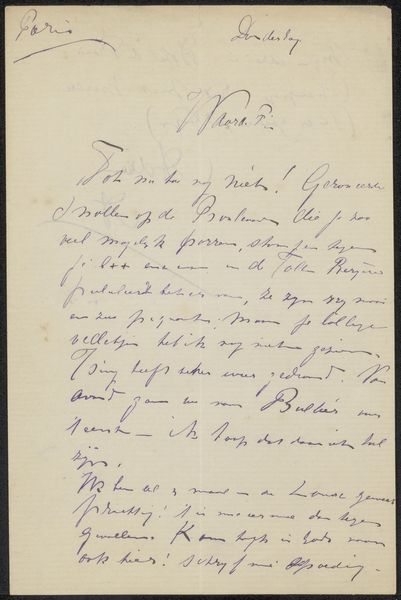
drawing, paper, ink, pen
#
portrait
#
drawing
#
comic strip sketch
#
script typography
#
hand-lettering
#
old engraving style
#
hand drawn type
#
hand lettering
#
paper
#
ink
#
hand-written
#
hand-drawn typeface
#
pen work
#
pen
#
handwritten font
#
calligraphy
Copyright: Rijks Museum: Open Domain
Curator: Here, we have "Brief aan Philip Zilcken" possibly from 1928 by Léon Paschal. It is executed with pen and ink on paper, presented as a drawing. Editor: My immediate reaction is one of intimacy. It's a handwritten letter, which brings a personal touch and a sense of history. The delicate script gives it an air of old-world elegance. Curator: Absolutely. Let's consider the context. Paschal was likely corresponding with Philip Zilcken, perhaps about artistic matters, judging by the date "La Haye, le 18 Juillet 28". These were the years marking societal transformations and shifts in artistic practices; examining the text through a gendered lens, how does this letter exemplify relationships and power dynamics among artists? Editor: I find the flow and slant of the text intriguing. Notice how the handwriting has a very personal touch, and suggests something about the author's relationship with language. It almost appears performative. Perhaps Paschal intended for this personal tone to emphasize a specific aspect of their relationship? The mention of "Exposition d'honneurs a Pulchri" gives it also the weight of institutional recognition in art. Curator: I agree. The letter points to a potential critique of artistic merit, or perhaps, the value judgments implicit within established artistic circles, since he says that Philip's talent shows toutes ses faces, he speaks of diversities and of critical spirit and objectifity. How were the artists positioned within those art networks? How does the letter itself negotiate social capital? Editor: The letter really underscores the power of personal correspondence, the cultural nuances present within handwritten forms of communications—a medium which, at the time, was still a main method of circulating both public and private matters. Its physicality serves as a time capsule of personal sentiments from over almost a century ago. Curator: Indeed. This piece highlights how seemingly simple documents can reflect not only artistic relationships but also power structures within the art world of the time. The fact that this piece remains suggests its importance, it has the weight of both material support and historical importance for us now to analyse. Editor: It definitely offers us more to consider concerning identity, art history, and the narrative surrounding artists of the 1920s, leaving us room to wonder.
Comments
No comments
Be the first to comment and join the conversation on the ultimate creative platform.
